It helpful to know how to drill through tile if you’re going to complete a successful tile installation project. The design may be exquisite, the tiles perfectly cut, and everything laid evenly. But, your job is not finished yet. Now comes the part that could potentially damage your hard work: drilling a hole through the tile to mount the accents. One slip or awkward move and you’ll end up with cracked, ugly looking tile.

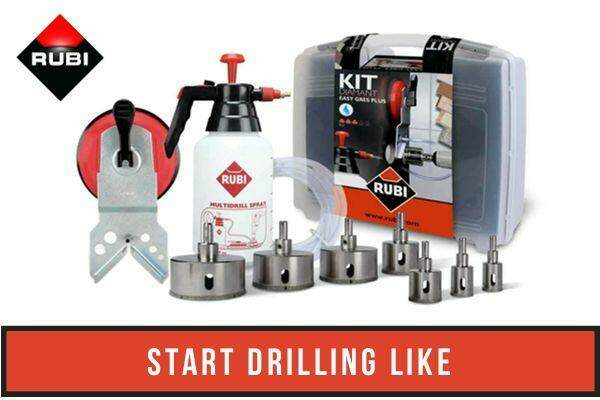
How to Drill Through Tile
Before you pluck up your courage and start breaking through the smooth surface, make sure you know how to drill through tile. It might seem like a pretty straightforward job, especially if you are a DIYer who isn’t very familiar with the different types of tiles and their characteristics. But, even if you are CTI certified, the smallest mistake can ruin the tile.
Fortunately for you, we have plenty of tips to help you learn how to drill through tile without breaking it. Keep in mind, though, that these steps will not guarantee that your tile will not crack. They will just minimize this possibility significantly. Without further ado, here’s how to drill through tile the right way.
Step 1: Know Your Tiles
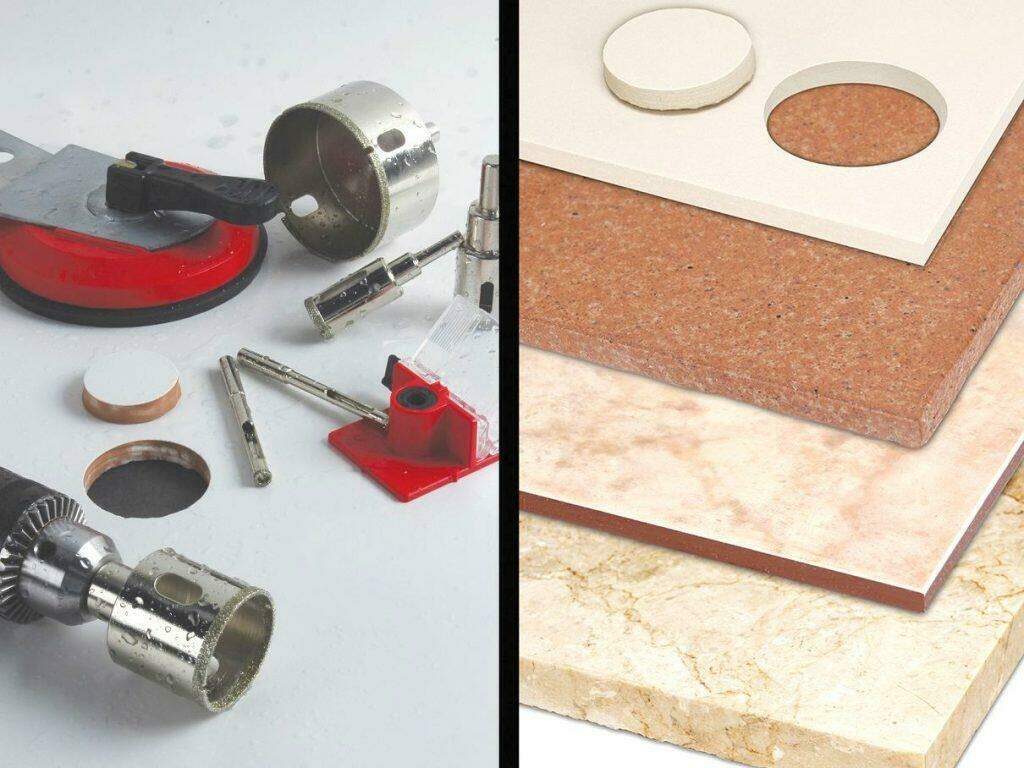
One of the first things you need to pay attention to if you want to learn how to drill through tile is the type of tile you are working with. If you know the characteristics of the material you are trying to bore through, you will have a better understanding of the task at hand.
Porcelain tiles, for instance, are harder to break through than ceramic tiles, since they are very dense. As a result, drilling through porcelain tiles will require more work and preparation than cutting through other types of tile. You will also need a specialized drill bit that can penetrate the hard surface of porcelain tiles. The same goes for drilling into stone tiles.
Now, that you know what you’re up against, let’s look at the tools you’ll need for this type of project.
Step 2: Make Sure You Have the Right Drill Bit
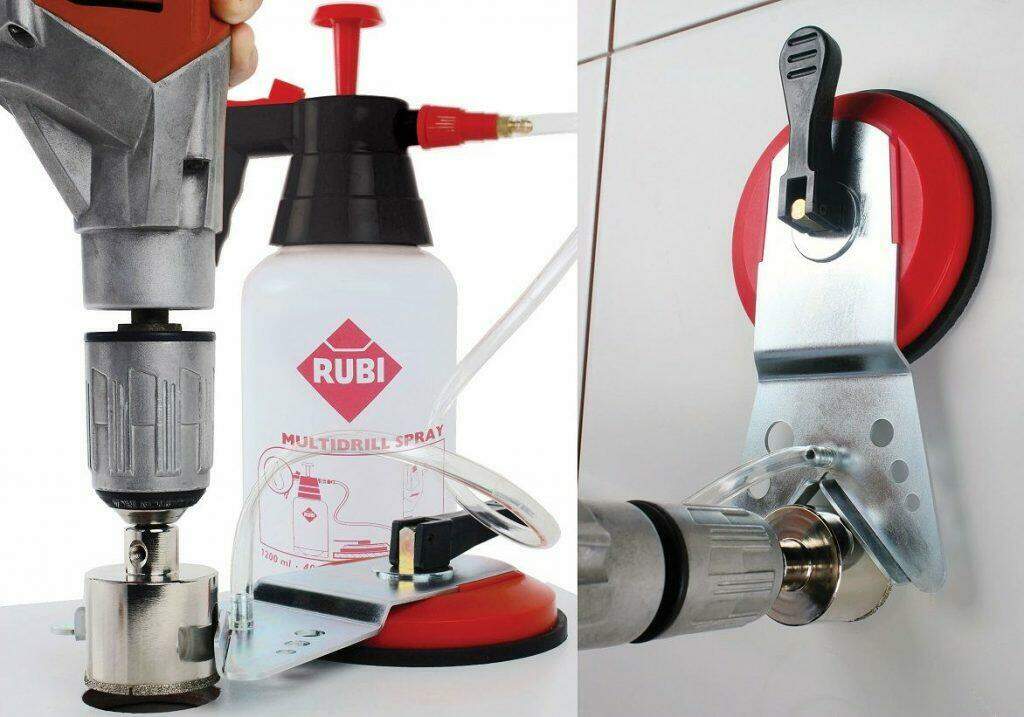
Regardless of the material you’re trying to bore through, never use an old, worn out drill bit for tile. Not only are they not as efficient as new ones, but also the chances of damaging the surface of the tile increase dramatically if the drill bit isn’t performing at optimal capacity.
Additionally, don’t use your regular drill bits for this task. They are not strong enough to penetrate the hard surface of the tile. Instead, opt for either diamond-tipped drill bits or carbide-tipped masonry drill bits. The first option, although a bit more expensive, is extremely durable and can bore through even the hardest tile surfaces, such as porcelain. It also will not burn out as easily as the masonry bits.
Carbide-tipped masonry drill bits, on the other hand, are probably the most common type of drill bits for drilling through tile. However, although this type of drill bits will do the job on glazed tile and stoneware, they are not recommended for porcelain stoneware. For this and harder materials, you will need tough diamond drill bits like our EASYGRES.
If you don’t have the tools you need for drilling into tile, at RUBI you can find a complete range of drill bits that will help you tackle this task successfully!
Step 3: Measure and Mark the Area
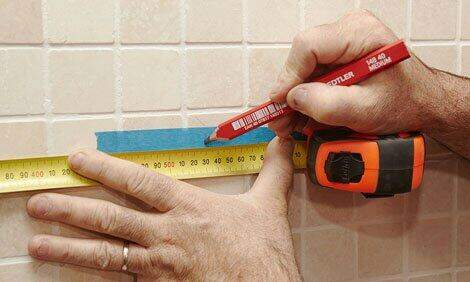
If you’ve ever tried to drill a hole through tiles, then you probably know that the bits tend to slip around on the surface, making it difficult to hold them in place. One wrong move and you’ll scratch or, even worse, crack the tile.
One simple trick you can use to create some tension is to use masking tape over the area where you want to drill the hole. Measure the area, mark it with an X, and place the masking tape. Measure it again after placing the masking tape to ensure that you didn’t misplace the hole. That way, you will have enough surface traction when you start drilling.
If you have more than one hole to drill and you don’t want to repeat this process over and over again, then you could create a template with a block of wood. Cut a hole through the wood, making sure it’s the same size as the drill bit you will be using. Place it over the drill hole and hold it firmly with your free hand.
Step 4: Start Drilling
Now, this is where the fun begins. This is the part where you will really learn how to drill through tile. Once the surface is marked or you have your wooden template in place, it’s time to start drilling.
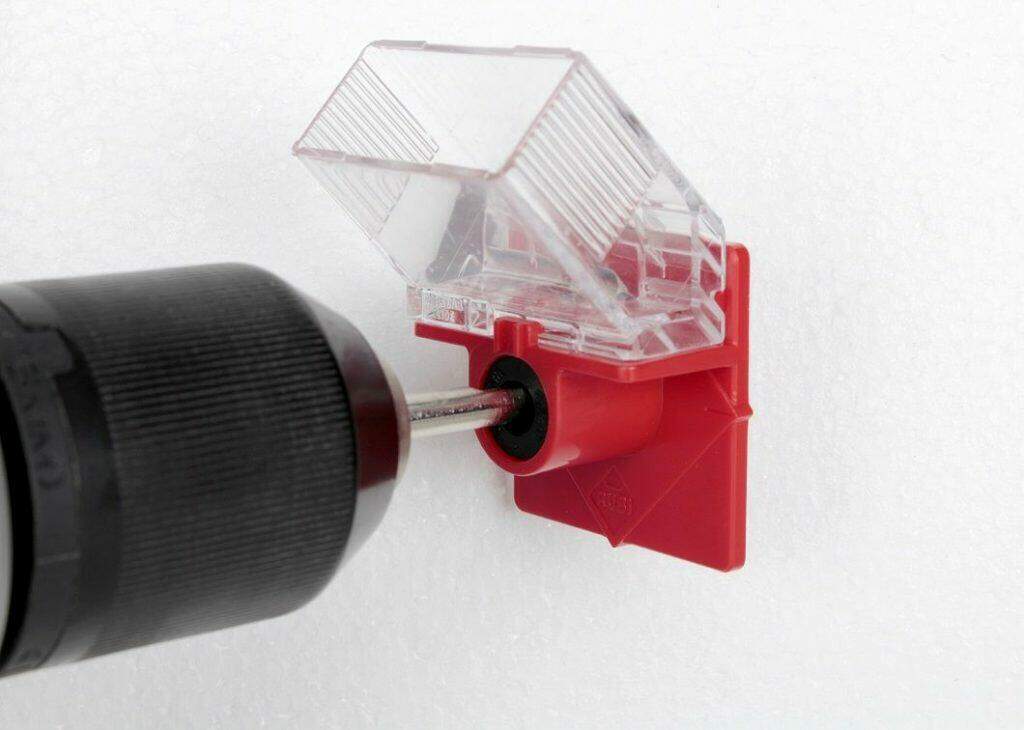
The problem with tiles (although, we’re not sure if we can call this a problem) is that they are designed to withstand a lot of abuse. But, this also makes them resistant to drilling. If you rush through the process, you might end up damaging all of your hard work.
One of the most important things you need to keep in mind is that drilling through tile is a task that requires a lot of patience. Start drilling on low speed and slowly. Take your time – it might take a while before you penetrate the hard glazed surface. Don’t make the mistake of believing that going full-speed is more effective. In reality, you will only overheat everything and create vibrations that could damage the surface.
Apply constant pressure, but not too much. Otherwise, you will break through the tile and create cracks.

Step 5: Don’t Forget to Cool the Drill
One of the secrets to drilling a hole through tile is keeping everything cool. Use a small wet sponge to cool down the drill bit and prevent it from overheating.
If you’re on your own and can’t hold the drill bit in one hand, the wood pattern in the other, and cool the drill bit at the same time, then you can stop from time to time and spray some water on it. Just make sure not to pour water into the motorized section of the drill.
Another trick you can use to keep the drill cool is holding a wet sponge under it. That way, you’re not only preventing the drill from overheating, but you are also catching the dust and debris produced by the tile. Not to mention, you’re preventing the water from pouring down the wall and all over the floor.
A short note here: unlike carbide drill bits, which stop the second they overheat and need to be kept cool at all times, diamond bits are not as high-maintenance. They will continue to work even when they heat, as long as you allow them to cool down from time to time. If you want to increase the lifespan of your tools, then you need to drill slowly, don’t put too much pressure, and lubricate the drill with cool water.
Step 6: Change the Bit When You Hit the Wall
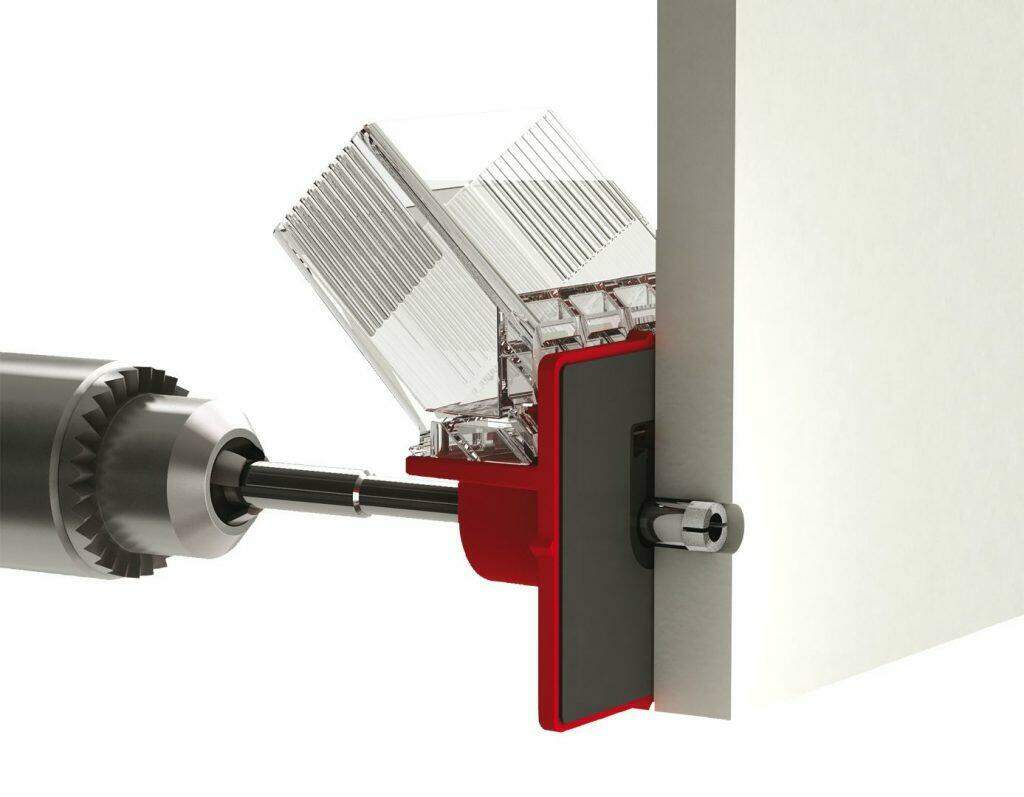
You’ve cut through the tile and hit the wall surface without creating any damage. You can breathe a sigh of relief now. You’re almost there; all you need to do now is bore through the wall and then mount the accents.
Keep drilling slowly to avoid crashing into the wall surface. If this happens, your anchor will not hold properly, and the accents will be loose. You might change the drill bit if you feel that the one you’re using is not that effective. The secret, however, is to keep the drill slow and steady and you’ll be able to bore a hole even with a drill bit meant for tile.
Step 7: Now You Know How to Drill Through Tile
Take a step back and admire the result. You can even give yourself a pat on the back. You did amazing! Now you are prepared to tackle the next project from start to finish with more confidence. Take a look at at how to use the RUBI wet drill bits.
There are a few main takeaways you should remember about how to drill through tile. First, you need to have the right tools. Without the appropriate drill bit for the job, the chances of screwing up increase significantly. Second, you need to be patient. Drilling holes through tile isn’t a race. You need to take your time and drill through the tile slowly and steadily. Also, don’t forget to keep everything cool. Overheating is one of the main factors that cause the tile to crack.
Last but not least, you need to be persistent. With practice, this task will only get simpler and drilling through tile will no longer be something that makes your heart drop to your stomach.
Want to know more tips on how to drill through tile? Did we miss something? Let us know in the comments below!
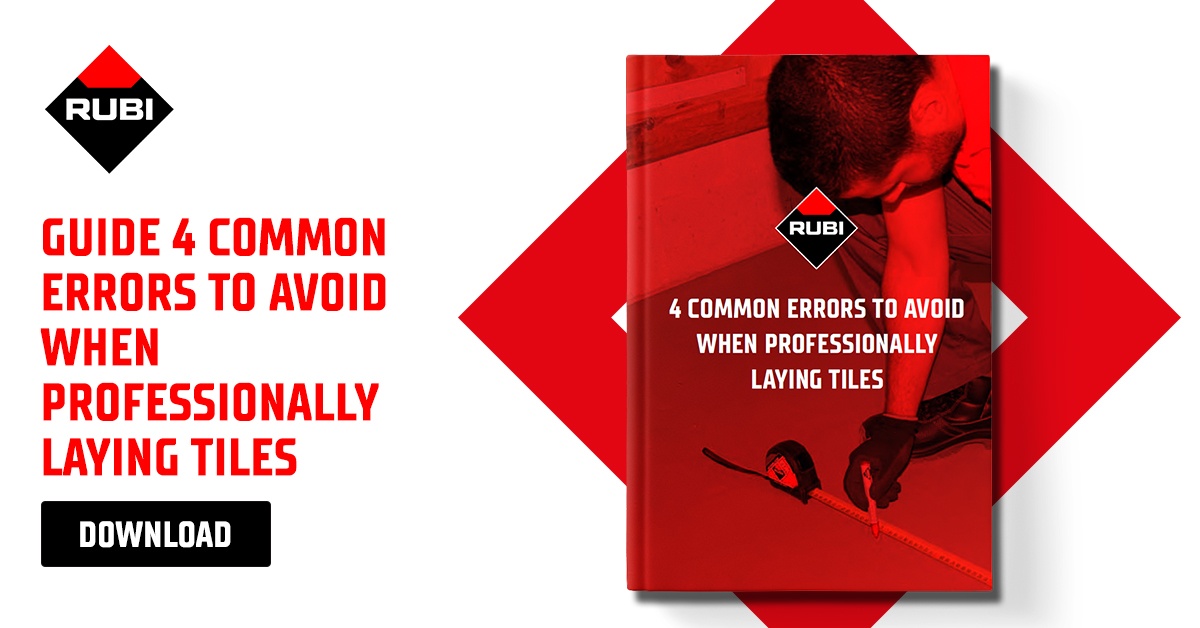

I would like to buy drill bit guide with water delivery source for tiles drilling. Can you deliver the product to India, and the terms please.
These questions would be better answered by our distributor directly. Below you have the contact information for our distributor in India.
New Bombay Hardware Traders Pvt. Ltd.
Plot-107, Sector-23, Janata Market Road,
Turbhe, Navi Mumbai, Maharashtra, India, 400705
Telephone: +912227833331
rubi@elmec.net
Which parts of a tile, whether ceramic or vitrified, are more prone to cracking while drilling? My mason tells me that one should never drill close to the tile edges.
Hello Ramesh. Good question. Drilling close to the edge of a tile can be more likely to cause the tile to break around the area you’re drilling. The closer to the center of the tile you drill, the safer you are in this regard. That being said, even when drilling in the center of a tile, results can definitely vary depending on the material you’re drilling, the quality of your drill bits, and your drilling technique.
Rubi’s Drygres Drill Bits and Easygres Drill Bits are great for drilling with as little tension and vibrations as possible, which definitely helps with this minimizing issue. Also remember to make an orbital motion with your angle grinder as you drill. This will reduce tensions, cool the tile and the drill bit, and reduce vibrations by getting debris out of the hole you’re perforating.
Here’s the webpage for our drill bits:
Easygres – https://www.rubi.com/en/easygres-diamond-drill-bits-r195
Drygres – https://www.rubi.com/en/drygres-diamond-drill-bits-r185
Good luck with your project!
I have to drill a 1/4″ hole through a metal threshold, through tile and then down into the concrete slab. This is for a throw bolt for a lock to go down into the concrete. I am guessing the hole will be about 2.5 – 3″ deep. An added issue with this is that I will not have a visual of the hole area nor be able to remove debris created by the drilling. I do not know if there is wood under the metal threshold or a void. I do not know if the tile is ceramic or porcelain. If it is porcelain, I have read that I should put water on the surface which I can’t really do. I assume I start with a metal bit and then change to diamond tip on a regular drill and then to a masonry bit on a hammer drill? Should I make the threshold and tile holes a little larger so as not to crowd the bit on the hammer drill? To make matters more challenging, the hole will be within an inch of the edge of the tile. Any suggestions would be most welcome. Thank-you.
Hi. We can really only advise you on drilling the tile. So, from what we understand you have to drill through tile first, and the other materials are underneath it. So you should start by using an angle grinder and a diamond drill bit that is able to drill without water. If you don’t know whether you’re drilling ceramic or porcelain, just get a drill bit adequate for porcelain to be safe. If it can drill porcelain, it can drill ceramic. Never drill through porcelain or ceramic on hammer mode. Here is a drill bit that should be up to this task: https://www.rubi.com/en/drygres-diamond-drill-bits-r185